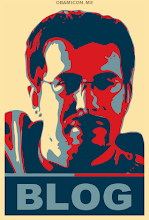In David E. Sanger's new book, The Inheritance, the chief Washington correspondent for The New York Times writes, "the Iranians may be so close to a bomb -- a few screwdriver turns away -- that there is no hope of stopping the country from becoming nuclear capable."
In yesterday's Times, Sanger and William Broad reported the Iranians have created "more than a ton" of enriched uranium -- a third more than previously known, which the article cites as enough to build an atomic bomb. If the Iranians now have sufficient amount of enriched uranium, Sanger's assessment is proving quite prescient.
In the book, Sanger also writes Olli Heinonen, the International Atomic Energy Agency's chief inspector, saw 2008 as a "breakthrough year" for Iranian uranium enrichment capabilities.
The summer before, Heinonen had predicted that by the end of 2008 the Iranians would likely be running upward of 4,000 of the high-speed machines [centrifuges] -- enough to make a bomb's worth of uranium in a year's time if they choose to enrich to bomb-grade purity. His prediction proved just about right.
While the new Obama administration has indicated its willingness to talk to Iran, the increased likelihood of a nuclear Iran could change some opinions in Washington, possibly allowing some hawkish members of Congress to revert to the previous administration's stated intentions to disrupt at any costs -- through sanctions or military action -- Iranian designs on creating a nuclear bomb.
The Bush administration had contemplated military airstrikes against Iran publicly since 2006, but Sanger reports in his book that the consensus for success was lacking. "Military experts who have studied the options say an airstrike could be devastating," writes Sanger, but also that it would not be quick. He quotes a former head of intelligence for the Middle East and the Defense Intelligence Agency as saying, "You are talking about something in the neighborhood of a thousand strike sorties and it would take all kinds of stuff -- air, cruise missiles, multiple airstrikes -- to make sure you've got it all." Some estimates, according to Sanger, have such a campaign lasting a week or two and making U.S. interests in the region vulnerable to attack from Hamas and Hezbollah.
Iran may have the enough nuclear materials, but they do not yet have a bomb. It is quite possible that the mullahs and President Mahmoud Ahmadinejad may not seek the actually warhead but merely seek what Sanger calls "a virtual bomb".
In the Second Nuclear Age, countries don't need to compile huge stockpiles of the sort that the Americans and Soviets amassed during the Cold War. All they need is a "virtual bomb," a credible capacity to build one in a few months and credible willingness to do so.
It appears the Iranians have achieved both points. How will President Obama react to this new nuclear paradigm?

No comments:
Post a Comment